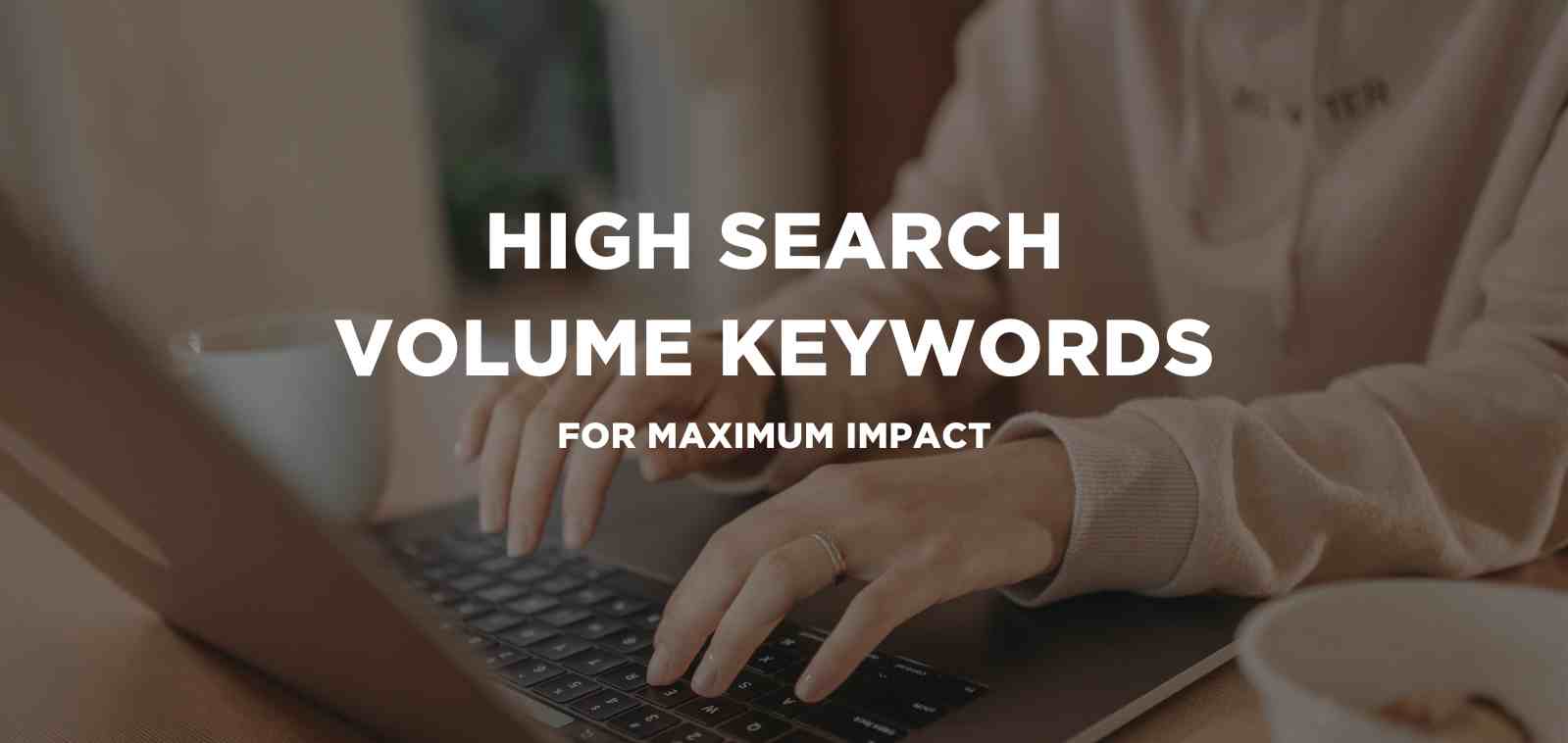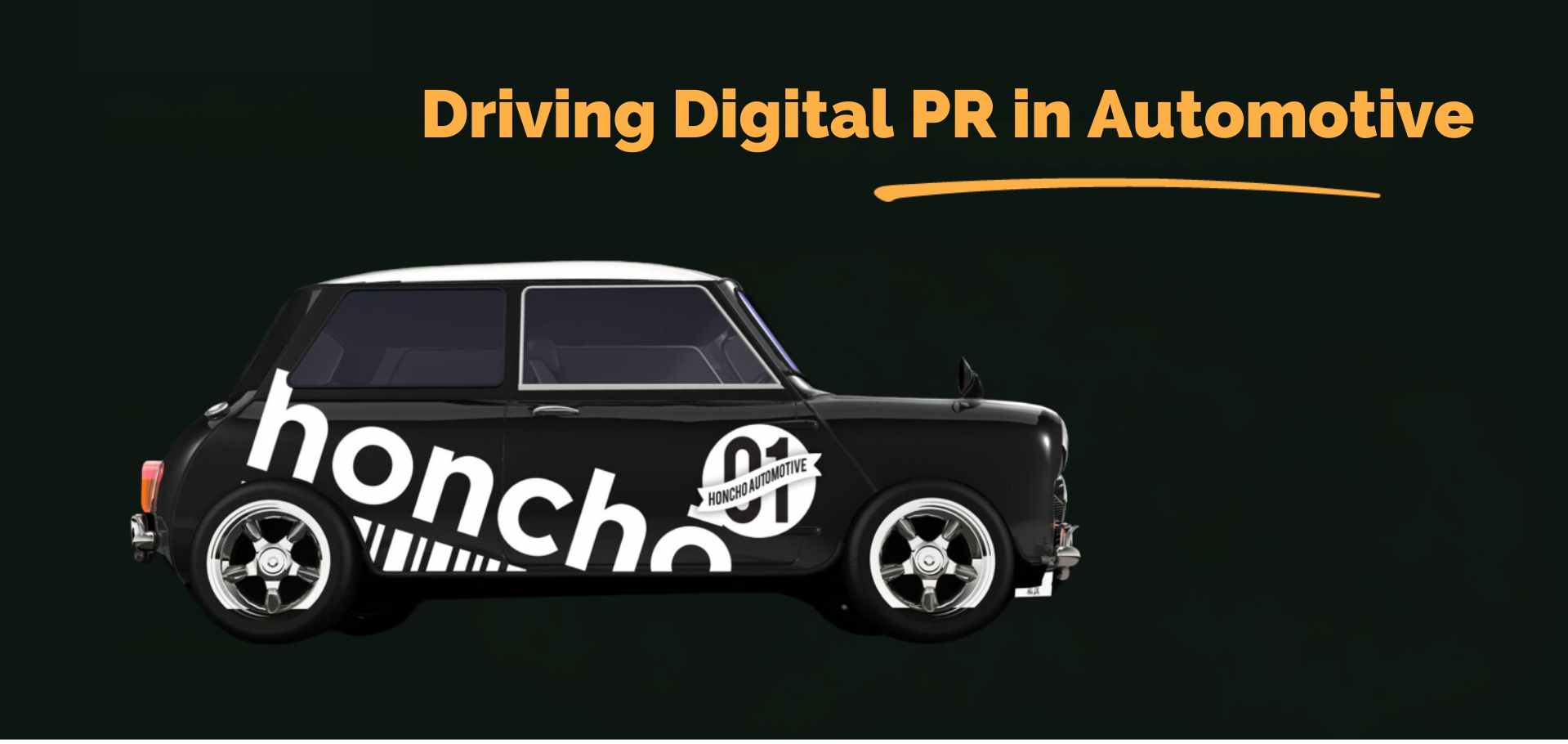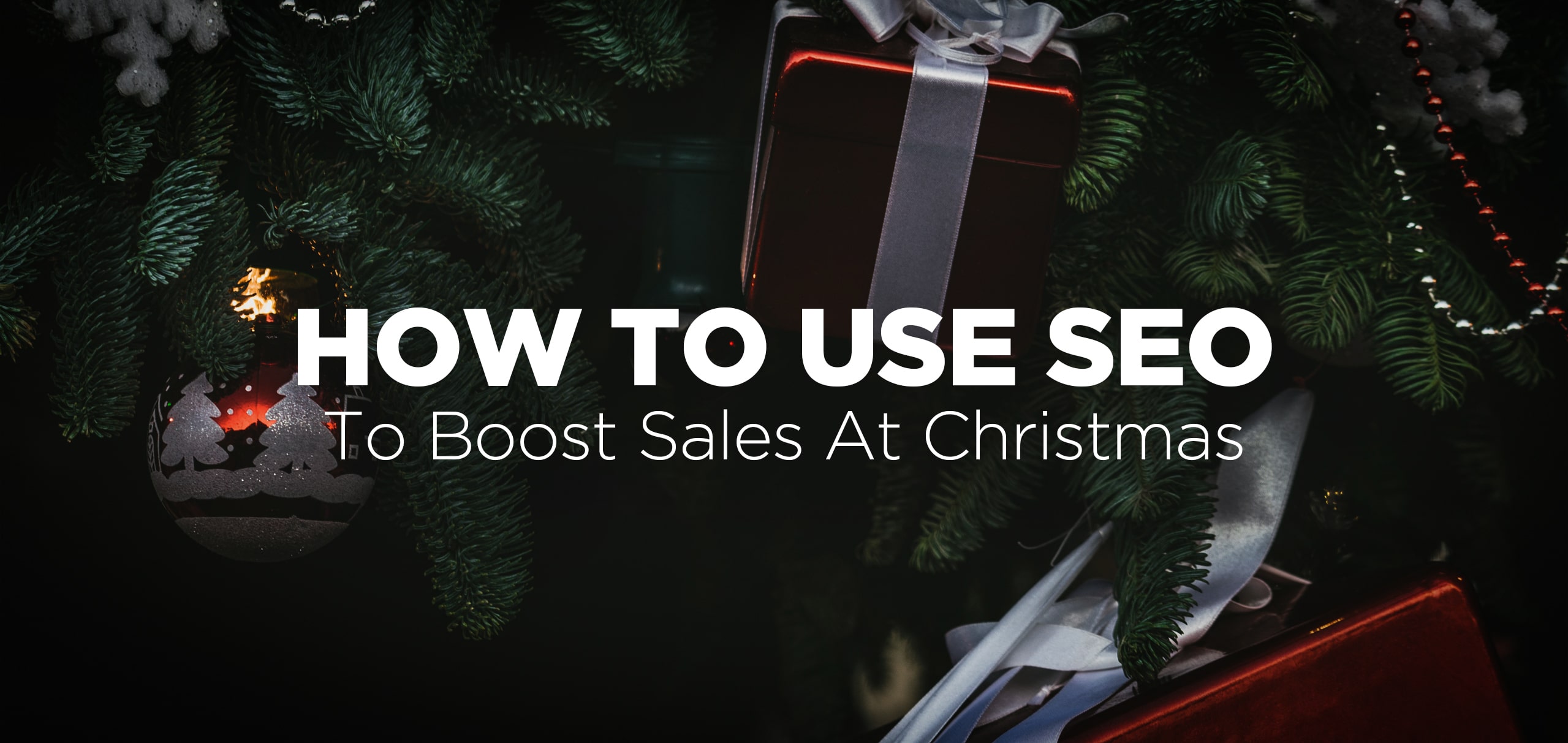iThinkMedia’s Mark King, PPC account manager, Natalie Howard, digital PR specialist and Harry Dodd, SEO account manager spent the 15th of September at Brighton SEO. They came back full of fresh facts and top tips – here’s the highlights: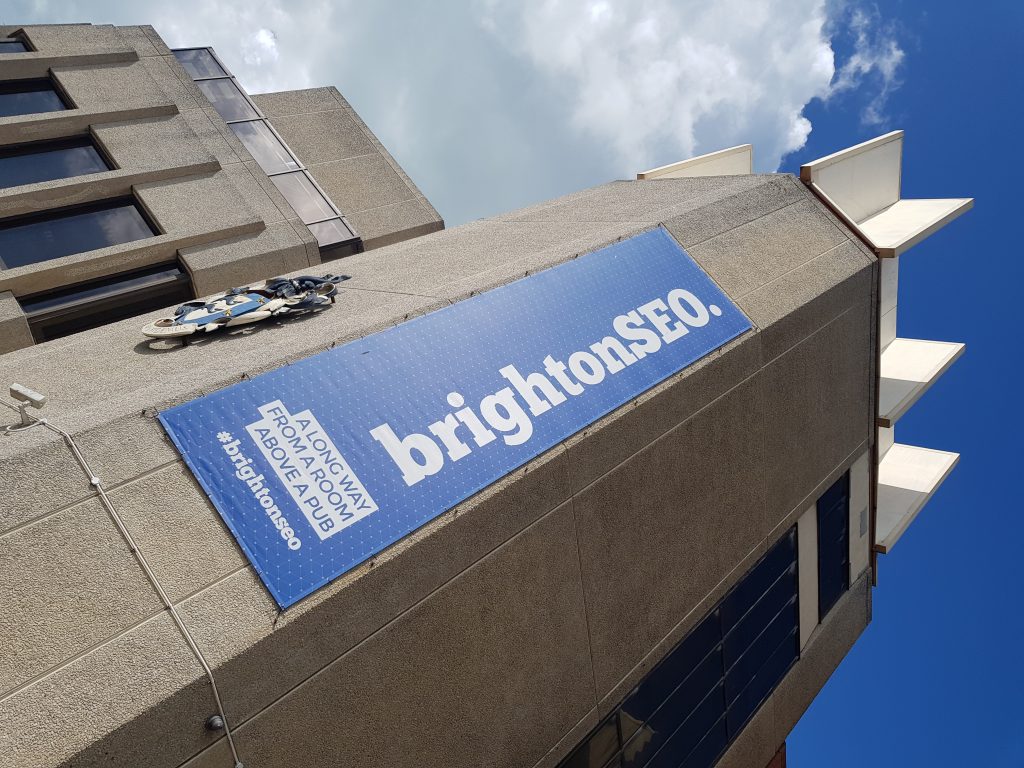
SEO Fundamentals
Danny Richman, digital business consultant and trainer at Richman SEO Training talked about small tweaks to improve site rankings.
How can you maintain your rank on page 1? “At the top end, user signals – and factors that Google’s algorithms associate with user signals – are everything…” Tom Capper, Distilled
Key Points:
- Once a site is ranking on page 1, user satisfaction is pivotal to keeping it there
- Satisfying users begins in the search results
- Optimise for people’s needs, not search engines
- Meta descriptions and title tags need to be optimised targeting the benefits of going on a webpage.
What’s in the mind of a search engine user?
- Will this help me achieve my end goal?
- Do they appear to be credible?
- What makes them different/better than others?
- What will I see when I click?
Top Takeaway
Improving the user experience where you already rank has the best return on investment in SEO.
See Danny’s slides here.
Nicole Bullock, senior associate at iProspect talked about tips for managing multi-location listings in GoogleMyBusiness (GMB).
Key Points:
- GMB signals account for 19% of local rankings according to Moz
- Use local numbers for all local citations instead of call tracking numbers
- Remove all duplicate locations
- Use one account for all listings to avoid issues if people leave the company
- Bulk verification requires a domain branded email address
- Always embed your Google map location on each location page
Top Takeaway:
Use transport route explanations and location specific advice to provide unique and value-adding content.
Online PR
The online PR talk was packed to the rafters, with more than 100 people standing at the back or sitting on the floor in the aisles – this is a hot topic right now.
Shannon McGuirk, Head of PR at AIRA spoke about news hooks and link building.
Key Points:
- Timeliness – does your story fit into the editorial calendar, why must it be used right now?
- Credibility – are your sources or data respectable?
- Different – is this something they haven’t seen before?
- Tension – does it cause controversy, questions or emotions?
- Prospecting – will it attract a new audience or conversions?
Top Takeaway:
Inbound PR will be key in 2018 – host content on your own site and guide influencers to drive traffic to it there.
See Shannon’s slides here.
Sophie Everett, head of PR at Prodo Digital was up next, talking about how to package and pitch a story to journalists.
Key Points:
- Press release must-haves: Human angle; no more than three key messages; in line with the outlet’s agenda; summary of story in the first paragraph, great image, not huge attachments
- Make it ready to print. Use the same header format as the publication you are pitching to. Use the same language. Make it easy for them to publish.
Top Takeaway:
Pick up the phone and speak to influencers. Practice your pitch over and over first. Listen to what they say to you, be reactive and always follow up. Don’t take rejection too hard. Use feedback to improve for next time.
See Sophie’ slides here.
Bobbi Brant, campaign manager at Kaizen rounded off the session, speaking about how to get links with an unknown brand and no budget.
Key Points:
- Use limited resources as a chance to get creative. Your story should be good enough to be covered regardless of budget.
- Data is everywhere and adds authority to your story – but don’t just visualise someone else’s data. Make sure you use it to create something unique and owned by you, or journalists will just leapfrog over you to the raw data that is already available online.
- Don’t work asset-first. Keep the story in your data. Don’t think – “what infographic can I create?” think “what is the story here, how can my asset support it?”
Top Takeaway:
Make sure all your ideas are unique and not available anywhere else. If you are using someone else’s’ data make it unique by mixing data sets, filtering it or being creative in ways to make it your own.
See Bobbi’s slides here.
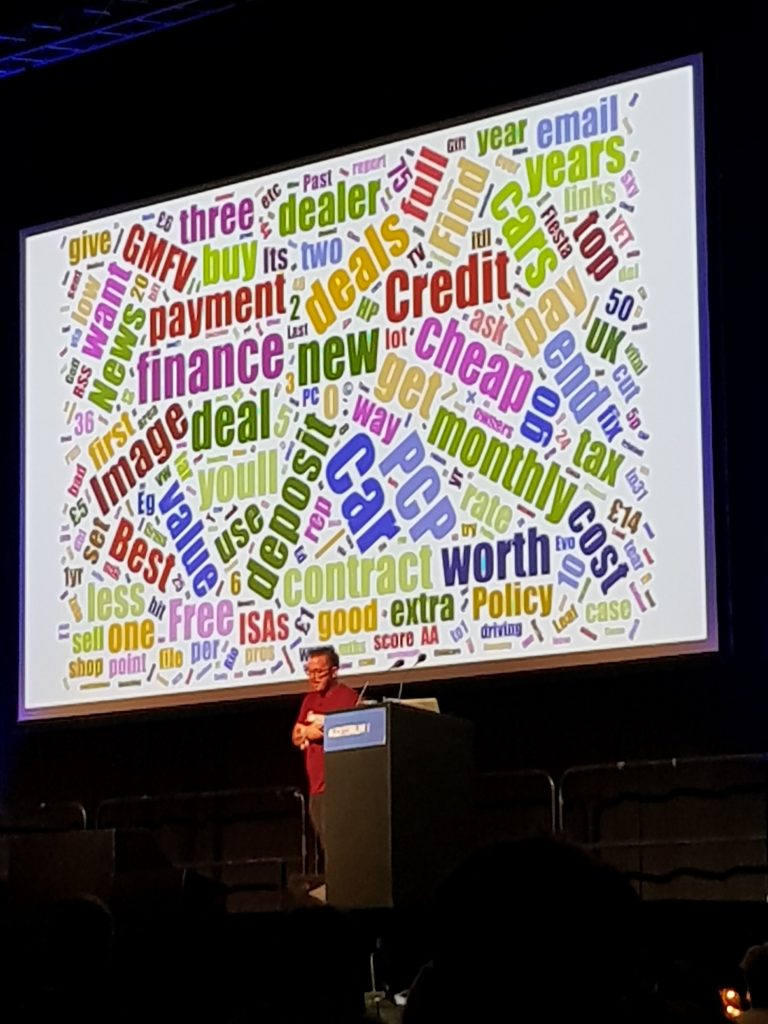
Influencer Marketing
The US spent $570million on influencer marketing and 2016 and it is predicted that 75% of UK marketers will up their influencer marketing spend in 2018.
Allyson Griffiths, strategy director at iCrossing started the session with her talk on micro influencers and poor influencer marketing.
She pointed out that the huge influencers such as Zoella can charge up to $75,000 per post, which is paving the path to success for micro-influencers who have smaller followings and niches but charge a lot less.
Key Points:
- Mission. What is your influencer marketing objective? Brand awareness? Revenue? Data capture? More social followers? Just pick one.
- Don’t choose several influencers with the same audience – what’s the point? Widen the net. Reach new but relevant audiences.
- Measurement. Determining the ROI of influencer marketing is predicted to the biggest challenge for marketers in 2018. Measure engagement, traffic, leads and sales. Give influencers unique identifiers or codes so you can track how many sales come from each one.
- Maximise. Use the information you gain from your influencer marketing campaign for your wider marketing efforts. Track backlinks and user signals. Create audience lists to use in PPC and email campaigns.
See Allyson’s slides here.
Sophie Bishop was up next speaking about her Ph.D on Zoella.
She revealed that 75% of children say they want to be a vlogger when they grow up. Vlogging has become a realistic creative career prospect now that the fields of journalism are shrinking. Schools are slashing budgets for media studies, so creative kids are turning to vlogging and there are now specialist vlogging schools.
Mindy Gofton from i-com took to the stage to ask: “Are you engaging or annoying your customers?”
Key Points:
- 64% of people dislike brands using slang. They also hate brands who are too obvious, blatant or lazy. People consider 41% of brands to have a personality, which is conveyed in their website content, adverts, social media and way they talk to customers.
- It is vital for customers to see your brand as a friend who they want to follow. People follow brands for these reasons:
- 13% Banter
- 33% Customer Service
- 11% Videos
- 24% Funny Content
- 47% Useful content
- 26% Identify with the brand, same ethical values
- Find a balance between engaging with what the audience are talking about and telling your own brand story.
Top Takeaway:
You have to engage emotionally with your audience. Motivate them to share your content by speaking their language and making them feel good.
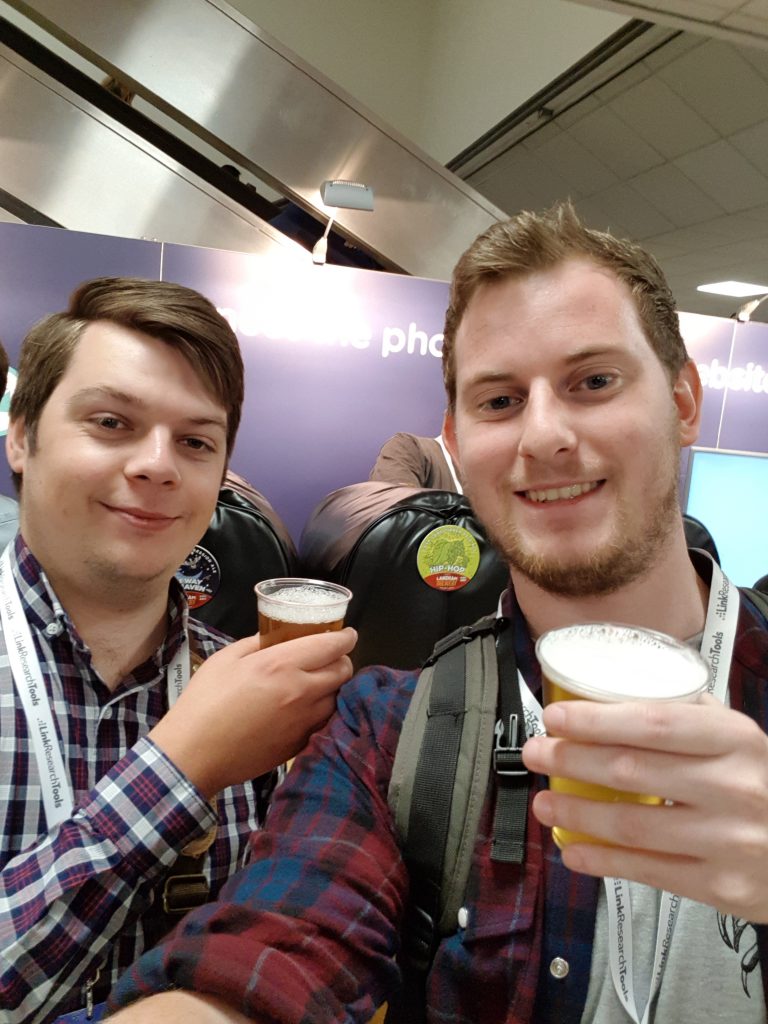
Javascript & Frameworks
Bartosz Góralewicz, head of SEO at Elephate asked: “Can Google Crawl and Properly Index Javascript?”
Using Javascript on your website is a fantastic way to make your content stand out to users, and to create features and functions that are great for users. But if you use JS to render links, can search engines actually read and index those pages?
Key Points:
- Not all Javascript frameworks are crawled in the same way
- JS generated links aren’t always crawled
- Google and Ask are the only search engines that crawl JS rendered links
- Although Google can crawl JS they don’t crawl it well
- JS doesn’t rank as well as HTML5 and also uses more of your crawl budget
- Download Chrome 41 for testing and debugging JS indexing
- Most link indexes (Moz, Majestic etc) can’t crawl Javascript generated backlinks
- Ahrefs can and does crawl JS Generated Links
“Javascript, even when indexable, can kill your crawler budget” – Bart Goralewicz
Ric Rodriguez – senior SEO manager at Croud talked about JavaScript and why we shouldn’t ignore it.
Key Points:
- JavaScript is used because it’s fast, ubiquitous, engaging and here to stay
- Used to enhance parts of a page or build whole pages
- Audit pages using inspect element (so you can see what’s included once code has loaded)
- Use server-side rendering to make sure key elements aren’t missed
Top Takeaway:
Only use JavaScript when necessary, to make user experience better. And make sure crawlers can find it!
See Ric’s slides here.
Link Building
The link building talk was held in one of the larger auditoriums due to it predictable popularity. Fili Wiese from Search Brothers kicked off the session.
Key Points:
- Don’t waste time or money building links that don’t convert.
- Link building is a long-term strategy and if done right, useful content will attract quality links that will benefit SEO and sales.
- Link building is fine is Google’s eyes, just not doing it to improve rankings
- Stop worrying about page rank and whether the link will improve rankings
- Always be linking whether in emails or business cards
See Fili’s slides here.
Dixon Jones, marketing director at Majestic asked the questions “How many links is enough?” and “Do links still matter”.
He explained that link values differ wildly, but for now, they do matter.
Key Points:
- Don’t be a salesperson. Connect experts to your audience. You are not pitching a URL, you are pitching an idea, product or process, a reason for them to link to you.
- Prep the launch. Give key influencers a heads up or preview of your content. Make sure they are first with the news. Send a preview. Meet them. Have a beer.
- Make it valuable. Make it yours. If your content is useful and unique it will be linkable. Give influencers a good reason to send their audience away from their site and onto yours.
Greg Gifford finished the session with a high-speed movie-themed talk on local SEO.
Key Points:
- The 2017 local search rankings show inbound links are the no.1 local ranking signal.
- Links are like votes of popularity. Don’t worry about Nofollow with local links, it’s all about proximity.
- SEOs say links need to be relevant. If the link comes from a site local to your business, it is relevant.
- Pull link profiles from similar businesses in other cities to replicate their tactics.
Top Takeaway:
Don’t mention links when outreaching. Focus on the value that your content can bring the other company or site.
See Greg’s slides here.
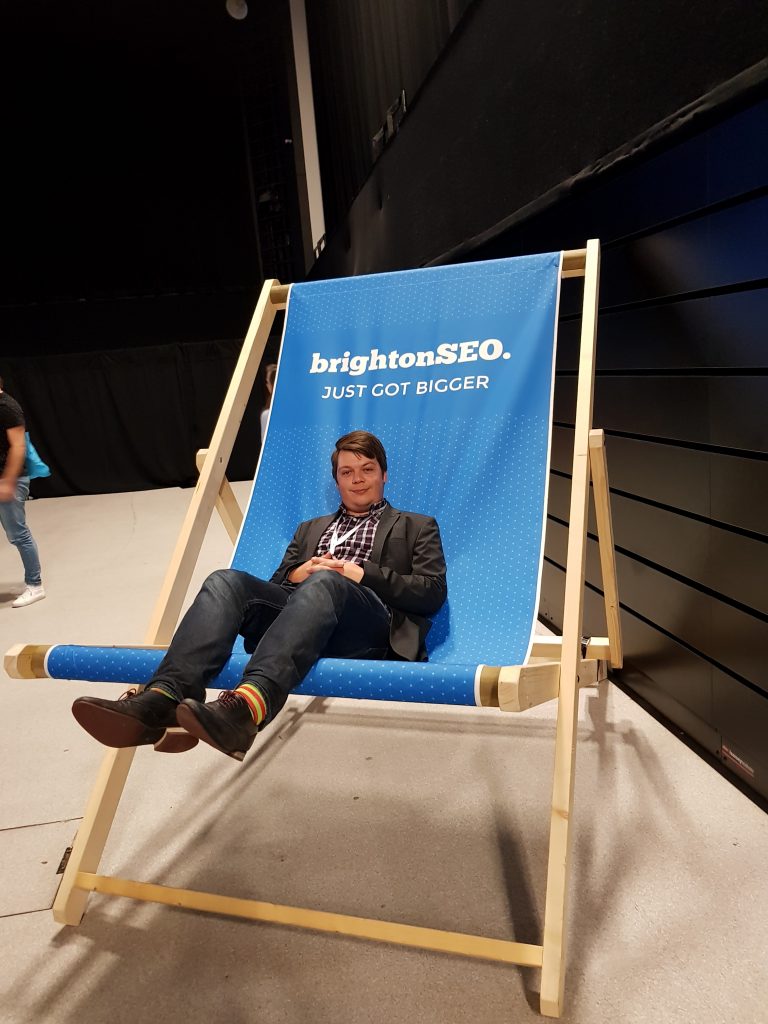 Outreach
Outreach
Marcelle Antunes from Verve Search spoke about creating campaigns worthy of BBC coverage.
Key Points:
- Domain authority and trust flow does not matter for local SEO.
- Use your real world relationships in the community to build local links. Who do you know? What clubs can you join? Which charities can you help? Comment on local blogs. Sponsor local events.
Top Takeaway:
The internet is not the only source of information. Pick up the phone. Talk to people.
Hana Bednarova, digital PR manager at Tecmark then took the stage to explain how to make sure journalists include links.
Key Points:
- Journalists need a really good reason to send readers away from their site.
- It’s all about relationships. Send only relevant content that journalists AND readers will share. Don’t abuse the relationship.
- Give them stories, not just numbers. Give them a reason to link back to your site – have further details, or the inside story, or expert advice on your site for readers that want to know more. Don’t give the whole story away.
- Don’t be shy to ask for your link.
- Remember that some sites are not video friendly. Do your research.
Top Takeaway:
Get involved at the beginning to help shape the content. Then you won’t be stuck outreaching something rubbish that won’t get any coverage.
See Hana’s slides here.
Advanced Keyword Research
Sophie Coley, strategist at Propellernet and Stacey MacNaught, search director at Tecmark spoke about keyword research tactics and tools
Keyword Research doesn’t have to be difficult and if you do it right you’ll see some really fantastic results from your campaign. These are just a few tips that you can follow to improve your keyword research, and also shape how you use it.
Key Points:
- Segment your customers. What problems do they ask? What problems can your products solve? How are they searching?
- What do you actually want from your visitors? Links? Sales? Awareness? – Each of these will need a different set of keywords to target new landing pages
- Find out what makes your customers buy your products – Focus on the questions they are asking
- Scrape reviews sites for common/positive adjectives and create a wordcloud of these terms – Use these in your ad headlines/page titles
- Stats related articles drive links
- Use Answer The Public to find common questions and themes that you can target
- Think about how your customers label themselves “Have they been skiing? Or are they a skier?” Skiers vs Boarders – look at two differing opinions on the same topic from different audiences
Top Quote:
“By 2020, 50% of all searches will be voice search” – Comscore
See Sophie’s slides here.
See Stacey’s slides here.
Paid Social
Duane Brown, founder of Take Some Risk Inc. said: “With YouTube continuing to grow and Facebook introducing ‘Watch’ – their new platform to watch shows on Facebook video marketing is becoming bigger than ever.”
There are over 500m video watchers on Facebook and 1.5Bn on YouTube every month consuming over 600M hours/day of video content.
Key Points:
- Connect Mailchimp to your Facebook account – this will enable you to use your email data to create custom audiences using customer match (lookalike audiences). Be aware that this connection doesn’t auto-update
- Use remarketing to re-engage customers who have already interacted with your content – only targeting users that have watched a good portion of your video (around 50%)
- Make sure your videos are visually stimulating and include text content on-screen – around 85% of people watch video on Facebook without the sound on
- Segment your campaigns into fairly small audiences – too many or two few people could be the difference between getting the result you want and wasting your budget. Create multiple campaigns with different age ranges, gender and location targets to make sure you can be specific to those people
- Planning Your Campaign: start with a Brand Awareness campaign. Then remarket to customers that interacted with your original ad with a clear product/service message and conversion goal. Customers who have seen your brand previously will be much more likely to convert
- Check your Google Analytics time lag report to see what your ideal remarketing time should be
- If you’re looking for leads rather than sales then you should consider using Lead Gen Ad Units. These are great if you are trying to get newsletter signups, but not so much for generated product-related leads.
Top Takeaway:
Think about Auto-play when looking at your results.
If you missed Brighton SEO September 2017 then we hope this will give you some insight into how the digital landscape is changing.
We also managed to capture the Q&A interview with Google’s Gary Illyes where he reveals the truth behind the mysterious Google Fred algorithm. Make sure you check it out!
That’s all from us for this year, but if you’ve made it this far, check out our other Search Marketing Insights too.
If you didn’t make the conference at the beginning of the year then check out our BrightonSEO 2017 takeaways.
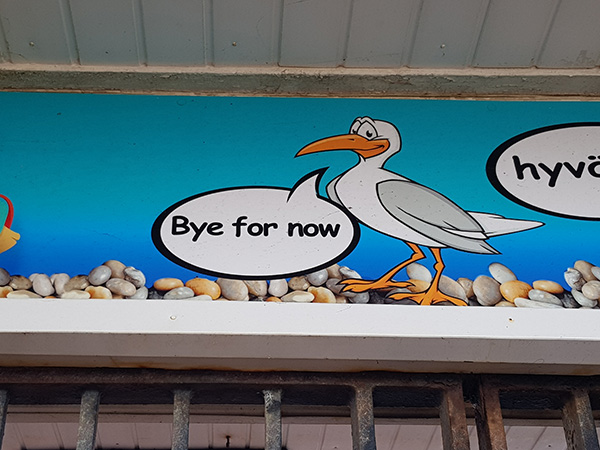



 Outreach
Outreach
